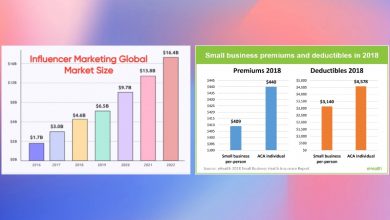There are few assets more critical to a business than employees. Nevertheless, many companies struggle to nurture their people and ensure they get the most out of them.
One way to do that is by adopting an HCM (human capital management) approach. This strategy takes a more strategic view of your workforce and aligns HR practices with overall business goals.
Table of Contents
Attract and Retain the Best
Human capital management identifies, recruits, manages, develops, and retains employees to help achieve business goals. It’s a broad field that includes hiring, employee training and development, performance review, and reporting and analytics.
Recruiting top talent is a priority for many businesses. This requires an efficient hiring process, effective onboarding, and a strong culture that helps new hires feel at home. It also requires a strategic plan for professional development and an effective way to track the success of that development.
Many companies need help attracting and retaining the best talent, especially in mid- to higher-complexity positions where stronger performers have a disproportionate bottom-line impact. Investing in people who are a good fit for your organization and want to stay with you is even more essential.
One of the most significant challenges in attracting and retaining the best talent is the need for more skilled, qualified candidates. This has pushed some organizations to consider using alternative talent pools, and it’s crucial to offer competitive salaries to attract suitable candidates.
It’s also vital to provide opportunities for growth and advancement within the organization, whether providing additional training related to your industry, encouraging employees to pursue college degrees, or certifying them for specific positions. These strategies can also minimize the cost of turnover by reducing the time and effort needed to train new employees.
Increase Productivity
In the early 1960s, the term “human capital” was introduced as businesses realized that employees weren’t replaceable units completing routine tasks – they were an essential component of the company that could be nurtured to drive business growth. Early human resource management (HCM) systems arose from this shift, focusing on talent acquisition, management, and optimization.
As a result, companies are looking to invest in human capital management (HCM) more than ever. Increasing employee productivity has become one of the most important goals for business owners. This is because high-productivity employees produce more than their less-productive counterparts, which leads to more significant financial results for the company.
Several ways to improve employee productivity include implementing a robust performance management system, providing training and development opportunities, and creating a culture that promotes excellence. However, the most significant factor in improving employee productivity is ensuring employees are empowered with the tools and support they need to succeed.
In addition, it’s crucial to develop a diverse workforce that includes people from different backgrounds, cultures, and perspectives. This can be done by promoting and rewarding diversity and inclusion initiatives, such as paid leave for family or emergency needs and flexible working options. A diverse workforce can also help increase business efficiency by bringing new ideas and approaches.
Increase Customer Satisfaction
Human capital is often defined as an employee’s unique knowledge and abilities that produce high-value labor. These skills can directly impact company profitability, customer satisfaction, and competitiveness. Maintaining these skills and improving them over time requires a comprehensive HCM strategy. This typically falls to a business’s HR department, which oversees talent acquisition, workforce planning, training and development, and reporting and analytics.
HCM practices can help businesses improve performance by streamlining the process of identifying and communicating goals, fostering professional growth, and increasing engagement. They also help companies establish and implement effective performance metrics and monitor key performance indicators. Additionally, HCM tools can create and track training programs that enable employees to develop their expertise in critical areas.
Another essential function of HCM is to promote a healthy and safe workplace, which is particularly critical in today’s increasingly global economy. This includes everything from safety protocols for remote workers and disaster planning to structured workplace wellness programs like health risk assessments and stress management sessions.
It’s often said that a company is only as good as its people, so forward-looking businesses are retooling their HR departments to practice human capital management. This helps them to foster professional growth, improve leadership skills, and build inclusive cultures. BetterUp’s HCM solutions allow managers to quickly identify and prioritize the skills their teams need to succeed while ensuring that these development initiatives align with strategic goals. Get started with a free demo today.
Invest in Your Employees
A company’s actual value stems from its workforce. Employees produce revenue and profits for their employer through the hard work they put into projects, so businesses should invest in these assets to ensure long-term success. The best way to increase human capital is by investing in training and development, which translates into savings for companies. Ultimately, this investment will pay off for the company and its employees.
With the “Great Resignation” still affecting hiring efforts nationwide and talent shortages continuing to challenge business performance, investing in your employees should be at the top of your priorities. In addition to ensuring that your employees’ immediate needs are met (like paying for daycare, laundry services, or free meals), it’s also important to consider what motivates them.
For example, employees are likelier to stay at a company if they feel their work has meaning and purpose. This can be accomplished by offering opportunities for growth and development, recognizing their accomplishments, and supporting their learning.
Another thing to consider is promoting a healthy and safe workplace, an essential HCM component. This can include everything from ensuring management practices support a balanced work and life culture to structured safety protocols like disaster planning, pandemic measures, etc.
Please explore our site for more exciting content if you liked dis article.





